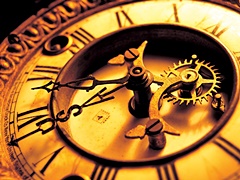
Welcome to Hemlock and Canadice Lakes!
Barns Businesses Cemeteries Churches Clinton & Sullivan Columns Communities Documents Events Time Line Fairs & Festivals Farm & Garden Hiking Homesteads Lake Cottages Lake Scenes Landscapes Library News Articles Old Maps Old Roads & Bridges Organizations People Photo Gallery Podcasts Railroad Reservoir Schools State Forest Veterans Videos
|
“Nature in the Little Finger Lakes” by Angela Cannon Crothers |
|
|
The Balance of Northern Earth Time By Angela Cannon Crothers September 2015 “Wake up with the birds. Go to sleep with the birds. Wake up with the birds...” And on and so forth was written across my friend’s wall. The rhythm of it was enticing, both literally and figuratively. But this seasonal stretch of long days that dawned with the calls of phoebes, towhees, and warblers and closed curtain with the notes of thrushes and the nocturnal chorus of frogs and toads is sliding away. Since the summer solstice we lost a minute of light a day for a month. The pace of light loss accelerates and now two minutes per day is sliced off diurnal time as we reach the autumn equinox on September 21. Tiny green tree frogs and bull frogs have grown hoarse and sleepy and insects now fill the void (lest there be silence too soon). Now katydids and crickets whir, chirp, buzz, and trill. The occasional sawyer beetle adds its chaw to the humming siren of night. Honeybees stock up on liquid sweetness. True silence comes after the first hard frost. The rhythm of light versus night incites change. Circadian rhythms are natural cycles life attunes itself to in places on the earth where daylight hours shift seasonally. Everything and everyone is affected, from the fungi and cyanobacteria in the soil to plants, insects, birds, and animals—like us. Despite the laggard but resultant solar cooling effect, it is actually the shortening length of daylight, more so than the falling temperatures, that signal trees to shut down their green chlorophyll factories, seal off their petiole stems, drop leaves. The low angles of UV and ultraviolet light, at the far ends of the light spectrum, inform dragonflies to troop together and prepare for their migration, much like monarch butterflies do. Our songbirds, well fed on a northern summer of bugs and ripe seeds, feel the obvious shift of the season and slowly disappear for winter in neotropical parts of Central America. How they know when to return to the Little Finger Lakes, or anywhere north, is still a great mystery wrapped up in weather shifts, magnetism, and other senses scientists still don’t know about. Somehow, even the blue-gray gnatcatchers recognize this change down at the equator; they know when the northern hemisphere begins to tilt again toward the sun on its year-long, elliptical orbit. And each year their migration is monitored shows them heading further north. Right now, even as earth moves a bit closer to the sun on its circular journey around it, earth also begins a slow tilt away from the sun, chugging slowly toward the shortest hours of daylight during the winter solstice. The equinox is time to take in the hush from the tasks of summer and welcome back the darkness that call us to rest. Despite this temporary balance of light vs. dark in our lives, the 24-hour-day is not an exact clock in relation to the actual spin of the earth—a speed which has us moving at about 1,000 miles per hour. And time does change—large earthquakes like the one in Japan in 2011 actually caused an estimated increase in our spinning speed by about 1.8 milliseconds. For so many of us, life does seem to speed ahead at an accelerating rate. Karen Thompson Walker’s fictional novel, The Age of Miracles, depicts a story of life on earth where the spin is not speeded up (as it seems to be doing in reality), but slowed to such a degree that darkness and light last days and weeks instead of hours. People become fiercely divided over whether to stick to natural time or continue to use the traditional 24-hour clock. It’s an interesting notion, natural time versus clock time, one we northerners adjust to month by month and season by season. Think about what a rare calamity of planetary measures causes leaves to change color and squirrels to gather acorns. Think about it! Think about what an anomaly it is that you can adhere to a planet spinning so fast while orbiting the sun, while at the same time wobbling on an invisible axis that makes things as you know them—ripening apples, spiders laying egg sacks before their lives expire, luscious loads of fall squashes—all possible. It’s enough to cause you to want to hang on tight, linger over a long sensual lick of freshly tapped honey, slow down, and make a moment last.
|
||
|
Editor’s Note: Angela Cannon Crothers is a naturalist and writer who teaches at Finger Lakes Community College and with The Finger Lakes Museum. Here are some columns that she has written about the Little Finger Lakes. Her columns also appear in the Lake Country Weekender newspaper.
|
||
